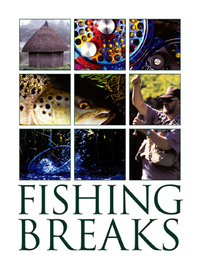


Local Sponsors
-
Whitchurch Fulling Mill - River Test
Fishing Breaks Ltd, The Mill, Heathman Street, Nether Wallop, Stockbridge SO20 8EW
This is a true sight fishing paradise, ideal fishing on the gin-clear waters of the most famous chalkstream where you will see wild brown trout in abundance. Day tickets available from May-September for one or two Rods. Wading advised.
More information
Many thanks to Fulling Mill for facilitating this camera's location. The higher one ventures up the River Test system, the better the hatches, the clearer the water and the wilder the fish. There is no better way of summing up the fishing at Whitchurch Fulling Mill. This is a true stalking paradise where the wild fish seem to peck away on the surface all day long, with a great variety of holding spots, pools and riffles. The River Test, situated in Hampshire, England, is a notable chalk stream. Its source can be traced back to Ashe, near Basingstoke, from where it gracefully flows southwards, spanning a distance of 40 miles (64 km) until it reaches Southampton Water. Along its course, the Test encompasses the towns of Stockbridge and Romsey, with the Test Way, a long-distance footpath, closely following the river below the village of Longparish.A significant portion of the River Test, covering an area of 438 hectares (1,080 acres), holds the distinction of being a designated Site of Special Scientific Interest due to its biological significance. Furthermore, it forms part of the Solent and Southampton Water Ramsar site and Special Protection Area, underlining its ecological importance. The river serves as a prime location for fly fishing, specifically targeting trout, from its source all the way to its tidal limit.Historically, the river has been referred to by various names, such as Terstan (877 and 901), Tarstan stream (1045), Terstein (1234), and Test (1425). Although some speculation surrounds its etymology, if we consider Common Brittonic instead of Old English, related dictionaries suggest three suitable words beginning with "Tre-" and none with the exceptionally rare "Ter-". Metathesis, a linguistic phenomenon, has occurred in similar cases, such as the river Tern in the far west, derived from "tren" meaning "strong". If this hypothesis holds true, it is likely that the name Test is connected to the Welsh words "tres" (tumult, commotion, contention, uproar) or "trais" (force, might in older Welsh). In Old English, a set of closely related words exists, such as "fyrst(en)", which shares the same meaning as its present-day counterpart, "first".Originating near the village of Ashe, approximately 7 miles (11 km) west of Basingstoke, the river commences its westward journey, passing through Overton, Laverstoke, and the town of Whitchurch. It then merges with the Bourne Rivulet at Testbourne, altering its course towards a more southerly direction. Along this path, it traverses the villages of Longparish and Middleton, reaching Wherwell and Chilbolton, where it converges with the Rivers Dever and Anton.Continuing its course, the river flows through Leckford, Longstock, Stockbridge, and Houghton before arriving at Mottisfont and Kimbridge, where it encounters the River Dun. Further downstream, the village of Timsbury is passed, followed by a stretch through the grounds of Roke Manor, ultimately leading to the town of Romsey. Situated on the western edge of Romsey, Sadler's Mill, an 18th-century watermill, straddles the River Test, adding to the scenic charm of the area.As the river proceeds southward from Romsey, it meanders past the notable country house of Broadlands and the historical site of Nursling, once home to a Roman bridge. Finally, the River Test merges with the River Blackwater, transforming into a tidal waterway that expands into a substantial estuary. The estuary's northern bank is adorned with container terminals and quays belonging to the Port of Southampton. Eventually, the Test estuary joins forces with the River Itchen, and together, they flow into the sea as Southampton Water.Between Chilbolton and Redbridge, the river once ran parallel to the Andover Canal, which was later converted into a railway in 1865 before ultimately being abandoned. Although remnants of the canal have mostly vanished, a section can still be observed between Timsbury and Romsey. Renowned for its chalk stream characteristics, the River Test boasts an exceptionally diverse array of flora and fauna among lowland rivers in England. Its banks host over 100 species of flowering plants, while the river itself supports 232 invertebrate taxa. Additionally, the river serves as an important habitat for wetland birds, including breeding species such as kingfishers, grey wagtails, and little grebes.The Environment Agency diligently monitors the water quality of river systems throughout England, assigning an overall ecological status categorized into five levels: high, good, moderate, poor, and bad. Various factors, such as biological status, which examines the abundance and diversity of invertebrates, angiosperms, and fish, are taken into account. Chemical status, assessing the concentrations of different substances in relation to known safe levels, is evaluated as either good or fail.

